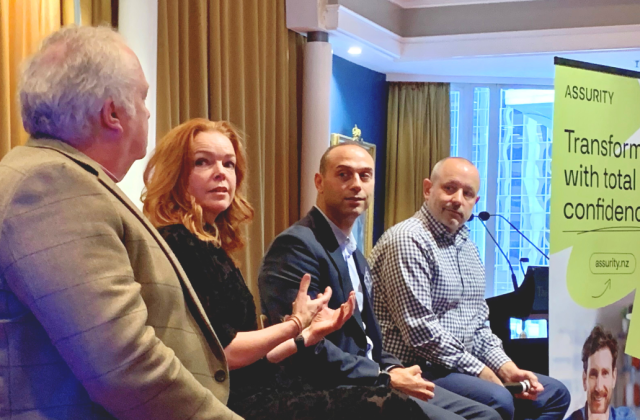Date: 14 September 2021
The webinar was a discussion on digital transformation projects and why so many still fail today, even after years of doing big and small IT projects. In a drive for a successful project, we discussed how a customer-centric approach supports project success from needs assessment to delivery and on-going management.
Following is an overview of what was discussed in the webinar.
Project Failure, and thus success
Why do projects still fail? Where does Governance fit?
Projects still fail. IT projects are notoriously difficult to manage. A survey published in HBR found that the average IT project overran its budget by 27%. Moreover, at least one in six IT projects turns into a ‘black swan’ with a cost overrun of 200% and a schedule overrun of 70%. In other words, while most IT projects will fall short of their budget targets, a few might overshoot the targets so much as to cause catastrophic organisation-wide problems. Effective governance is paramount; ineffective governance is consistently listed as one of the biggest risks in the Treasury Gateway reports.
Customer-centric approach, testing
Customer-centric approach to IT projects – what does that mean and how do you start?
Understanding the people, both internal and external, in your ecosystems. Understand what success looks like for them and test through their lens. Techniques such as Customer Impact Mapping, People Empathy Interviews contribute to building a people-centric view.
Does this require a culture/mind-shift change from traditional approaches – especially around testing?
Yes. The organisation has to embrace failing early at the lowest possible investment point. They have to view testing as a value add to verify the design, not an ambulance at the bottom of the cliff. Traditional approaches rely on a flawed assumption that the designer has understood and accommodated the customer or people impact. So we test the stated requirements. Customer-centric testing verifies design early, creating the cultural shift to fail fast. Projects that are a success verify designs early or course correct in the event of undesired impacts to customers.
How do you embed the voice of customer into testing when you’re working on supplier side, without overwhelming the customer or being interpreted as a lack of understanding?
Inclusive, empathetic engagement. People welcome the opportunity to shape services that impact them. Customer Empathy Interviews, Prototypes, and Beta testing with a broad demographic are methods I’ve used to understand and position the customer in testing.
Visibility & Measurements:
How important is it to provide visibility throughout the software development lifecycle?
Transparency and ‘visibility’ are fundamental to effective project management and good governance – the sole purpose of which is to provide effective decision-making. Effective decision-making is predicated on timely, accurate and relevant information.
Is there benefit in having your System Integrator and Test Partner separate?
A recurring, and critical, observation from many failed projects is the lack of test planning and actual testing undertaken. The project testing team can be the proverbial canary in the development/implementation coal mine. They see indications of success or failure well before anyone else. Therefore, a regular and diligent testing process is essential to ensure the delivery of a quality product to the end-user. Recently, IRD completed a very successful ERP implementation; the Project Sponsor attributed that success partly to the inclusion of the Test Manager (TM) on the Project Board. The TM sat next to the Project Manager and worked closely with, but independently of, that function. At the governance level, this arrangement provided the Project Sponsor with another source of data to ascertain ‘what good looks like’. Assurity played a key role in the provision of assurance, test expertise, and resource during the project.
How does a customer-centric approach impact TCO?
We are often overly confident in our ability to understand the complex working mechanisms of an organisation. We assume we can “freeze” and “unfreeze” the organisation to change elements, while it is in constant flux. The end of a transformation is in fact the beginning of the next. People are key; hence, we at Assurity adopt a people-centric approach to all we do. If we do not build enduring confidence in the outcome in our people (customers) then we will see a lack of adoption, increased re-work and, even, sabotage. All of these issues increase TCO. You must bring your people along on the journey – because in the end, it is your people who will make or break the organisation’s success.
How important is driving innovation in project delivery to enable the team to think differently? And how do you balance that with delivery?
I’m a great believer in the power of the business case. Most times we undertake a Digital Transformation we do so to achieve some form of ROI for the business. Innovation should always have a positive impact on the ROI. If the implementation of innovation negatively impacts our ability to deliver to the ROI thresholds then we need to seriously question why we are doing it.
There are multiple Digital Levers that can drive Digital Transformation such as technology intervention or RPA. How do you decide when to use which lever – especially when the cost is a driver in decision-making?
Firstly, Digital Transformation is problem-solving, whereby you aim to transform your business in order to reach an outcome that is not attainable by staying complacent. Your goal is the result, your problem is the barrier to getting there. When a program, strategy or project fails to achieve its goals, the reason can often be traced back to the very beginning when no one seemed to clearly define or agree on the problem. That may sound a bit strange – how can any organisation move forward with a solution unless they clearly understand the problem? Therefore, how appropriate is your digital lever in the context of the original problem statement?
Secondly, if business optimisation is a core tenet of your digital transformation, then do not be seduced by technology. We are often driven to ‘digitise’ everything, even a sub-optimal process. Resist the temptation.
Automation:
Where does test automation come in, how and how much?
At the start as part of a wider automation strategy that has aligned to a vision to achieve a return on investment. It provides the platform for continuous testing built on customer success. Build your automation assets in parallel with development. It allows Developers to deliver incremental change at speed. Start with a minimum viable product and expand on value-based decisions. All assets developed can be run in every environment to Production.
Is there such a thing as autonomous testing with AI and ML?
In my opinion, no. AI & ML will expedite the volume of testing conducted in a short time, it’ll allow more to be tested in less time providing more confidence but AI & ML are not humans. And often the customer success spans multiple platforms and technologies. AI & ML will allow the testing to focus on high-value activities.
Is there a significant investment around test automation?
Yes, but if executed correctly, the benefits will far outweigh the cost. Automation needs to be clearly assessed for its return on investment and how it contributes to the organisation goals. The investment needs to be measured against the cost of manual testing and its associated impact on the organisation on speed to change and operate. A good automation strategy promotes trust to deliver incremental change at speed.















